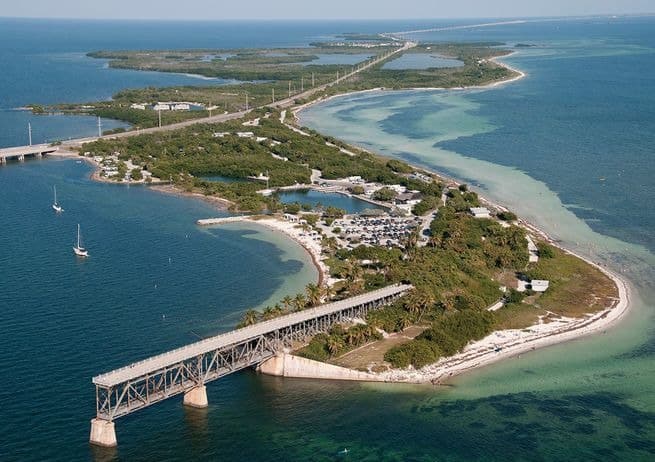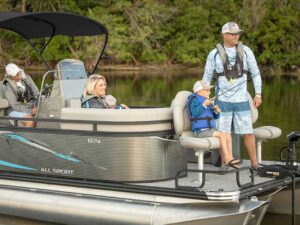
We decided to meet friends in the Florida Keys with our 25-foot center-console to hunt for lobster. While our life jackets were stowed over the helm in an easily accessible, zippered compartment, our throwable cushion was normally stashed in the console below so that it wouldn’t blow off.
On this day, we quickly buried it under our dive gear, which we didn’t normally carry on board.
We launched the boat at Bahia Honda Key near Marathon and began to lobster in the pass under the Overseas Highway. Our wives manned the boat while we began to drift-dive in a pass under an Overseas Highway bridge, drifting with the tide toward the Atlantic.
My buddy and I quickly learned that our dive buoys had been pulled underwater when we stopped to investigate a spot, making it hard for our wives to pace us. To make matters worse, visibility was low and we were quickly separated from each other.
As a less experienced diver, my tank emptied quickly, and I surfaced about 30 minutes into the dive. At least 15 minutes passed after I’d reboarded and we hadn’t yet spotted my dive buddy. We still weren’t too worried. He was a better diver, and in only 25 feet of water, he would have enough air for an hour or more.
Finally, a diver surfaced alone, but far off at the edge of the Atlantic. Nearly a speck, he raised his arm, waved and waited. Our diver, so we thought.
I eased the throttle up and advanced at a fast idle, using the current to enhance speed and avoid waking other boats in the pass.
Then the diver began to wave frantically.
“Wow, he looks a little panicky now. I wonder what’s wrong,” somebody said.
“Hang on, we’d better rush on over.”
As we got near the diver, I dropped the throttle back and realized that he wasn’t our diver. But he was panicking, his maskless face bobbing above and below the surface. I shut the motors off and tossed him the stern line. I hit the target, luckily, as I didn’t have a backup plan, and he didn’t have time left for another pass.
“You OK?” I asked.
“No.” He grabbed the rope, his face grim.
“You want in?”
“Yes.”
On board, he took a minute to compose himself, and I explained that I needed to start the motors to regain control of the vessel. He steadied himself against the transom, and I noticed his completely deflated BC.
“I lost my boat and my BC ruptured. I was cramping up.”
In a moment, the crew on his boat spotted us and wanted to transfer him back to the vessel.
“Before we take the time to transfer, I need to get my diver back aboard,” I hailed back.
Another 100 yards or so upstream our diver surfaced, and we reclaimed him too.
In some ways, it was fortunate for the distressed diver that we were hunting so hard for our own diver. He was nearly lost in the Atlantic, still traveling fast with the tide.
In reality, we could’ve lost two divers. We had made several mistakes.
First, we buried our throwable cushion. Now it hangs on the rod holders behind the helm station.
Second, our chase crew wasn’t wearing life jackets. Had they been, one of them could have safely jumped overboard to assist the diver. Now our chase crew wears inflatable belt packs. They don’t interfere when you’re wrestling with heavy gear, and, less important but noteworthy, they don’t interfere with enjoying the sun and sea air.
Finally, we have now moved to a dive area that is less demanding for two untried dive buddies. We have also set a bottom time limit of 20 minutes, after which we resurface, check our position with the boat and buddies, and make sure we are all in sync.
The U.S. Coast Guard is asking all boat owners and operators to help reduce fatalities, injuries, property damage, and associated healthcare costs related to recreational boating accidents by taking personal responsibility for their own safety and the safety of their passengers. Essential steps include: wearing a life jacket at all times and requiring passengers to do the same; never boating under the influence (BUI); successfully completing a boating safety course; and getting a Vessel Safety Check (VSC) annually from local U.S. Coast Guard Auxiliary, United States Power Squadrons(r), or your state boating agency’s Vessel Examiners. The U.S. Coast Guard reminds all boaters to “Boat Responsibly!” For more tips on boating safety, visit www.uscgboating.org.








